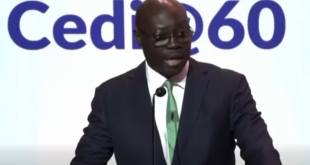Accra, August 6, 2025
Ghana’s headline inflation rate fell to 12.1% in July 2025, down from 13.7% in June, according to new data released by the Ghana Statistical Service (GSS). This marks the seventh consecutive month of decline and represents the lowest inflation rate recorded since October 2021.
The steady disinflation trend is being attributed to continued moderation in both food and non-food prices, signaling easing cost pressures in the broader economy.
Key Highlights:
- Food inflation: Down from 16.3% in June to 15.1% in July (↓ 1.2 percentage points)
- Non-food inflation: Fell from 11.4% to 9.5% (↓ 1.9 percentage points)
- National average inflation: 12.1%
- Upper West Region: Highest regional inflation at 24.8%, though down from 32.3%
- Central Region: Lowest inflation rate at 7.7%
Implications for Monetary Policy
The sustained decline in inflation could influence monetary policy direction in the coming months. Analysts suggest that the Bank of Ghana may find room for potential interest rate adjustments, especially if the disinflationary trend continues and core economic indicators remain stable.
“This signals a significant improvement in Ghana’s inflation outlook, especially compared to the volatility observed between 2022 and early 2024,” an economist from the Centre for Policy Analysis said.
Regional Disparities Remain
While the national figures point to overall stability, regional disparities in price levels remain pronounced. The Upper West Region, despite improvement, still recorded inflation more than twice the national average, indicating localized cost challenges. Conversely, the Central Region’s 7.7% rate suggests relative price stability in that part of the country.
Outlook
If current trends hold, Ghana may edge closer to achieving its medium-term inflation target, boosting investor confidence and supporting real income gains for households.
 Adoa News Adoa News
Adoa News Adoa News




